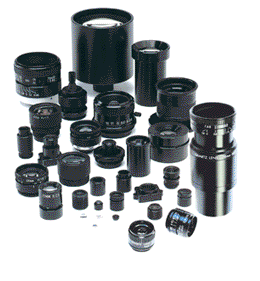High resolution lenses for machine vision — standard and custom lens design
IR Cameras Enhance Medical Diagnosis
High Resolution Lenses for machine vision, instrumentation, inspection and vibration-sensitive applications. Standard and custom hi-res lens assemblies.

IR Cameras
Living organisms and other items emit infrared radiation when at, or near, room temperature. The IR radiation each emits increases in proportion to the surrounding temperatures.
Through the use of a thermal imaging camera and its thermographic applications, this radiation can be converted into a visible light display complete with color codes that correlate to the ambient temperature. Both infrared and thermal imaging have uses in fields as varied as military, surveillance, electronics and firefighting. Firefighters use thermal imaging and IR cameras to find individuals trapped in burning buildings, as their heat markers are different than the flames around them.
Infrared cameras are also used in the medical field and enhance diagnosis in both animals and humans. Thermography has been used for more than a quarter century as a diagnostic tool. IR video cameras have been embraced by the medical field as a sensitive diagnostic tool and have been used in myriad clinical and experimental situation. The camera has proven useful in diagnosing breast cancer, neck and back problems, arthritis, soft tissue injuries and nervous system disorder. These cameras are a non-invasive way to diagnose the patient and also limit their exposure to radiation or potentially harmful surgical procedures.
Thermographic studies have shown there are anticipated baselines of “normal patterns” of human body thermal imaging. To test using a thermal imaging or IR camera, deviations from the normal temperature patterns are an indication to physicians of an abnormality. The temperature deviations have been associated with myriad pathological phenomena and lead doctors toward a diagnosis and treatment plan. A thermal imaging camera is one of the best methods doctors have for studying the skins’ temperature and finding “hot spots” which could indicate inflammation or a “cold spot” that could indicate a reduced blood supply.
Through the use of a high-resolution dynamic thermal imaging camera, physicians are able to view real-time anatomical, physiological and pathological information and are useful during medical procedures. Infrared imaging is used in the neurosurgical and cardiovascular procedures and in cases of melanoma. Veterinarians also utilize thermal imaging to capture thermal signatures of their four-legged patients to determine the absence of presence of health issues and blood flow deviations.